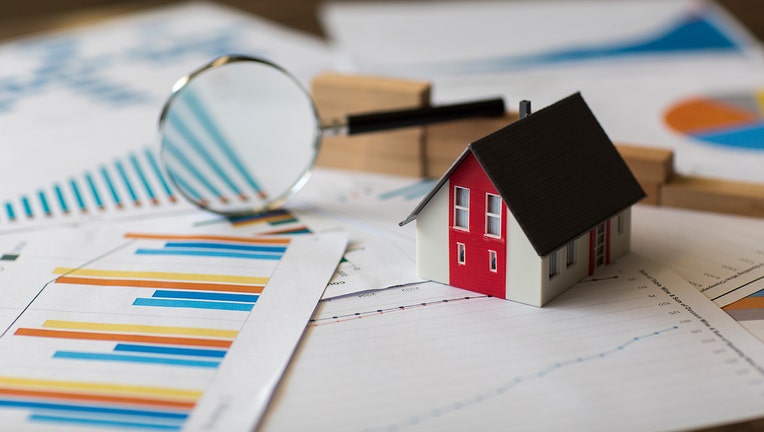Here's why using a savings account for a down payment on a house is a smart money move

Saving money for a down payment is a challenging step toward homeownership. Thankfully, a high-yield savings account can help you maximize your savings so you can reach your house down payment goal faster. (iStock)
One of the most challenging parts of buying a home is saving money for a down payment. Typically, home buyers need to put down at least 20% of the selling price. For example, if the home’s price is listed at $200,000, the down payment should be around $40,000, which is equivalent to 7.5 months of income for the average home buyer. Though a mortgage will cover the majority of the home’s purchase price, the down payment is not covered by the bank.
A house down payment is a substantial amount, which is why it’s wise to begin saving money for your home purchase as soon as possible. Placing money aside in a traditional savings account is a good start, but to maximize your savings and earn as much as possible, you should consider other savings options. High-yield savings accounts, certificates of deposit, money market accounts, and cash back credit cards are just a few of the ways you can boost your savings potential.
When it comes to saving money for a house down payment on a house, every penny counts. If you don’t want to leave money on the table, you can maximize your earnings with these high-yield savings options on the Credible marketplace.
4 REASONS TO OPEN A HIGH-YIELD SAVINGS ACCOUNT RIGHT NOW
Why you should consider a high-yield savings account
Most individuals planning to purchase a home will start building their down payment in a traditional savings account. Unfortunately, this type of savings account does not offer a high annual percentage yield (APY) rate to help maximize earning opportunities. A high-yield savings option, however, can offer account holders a substantially higher interest rate — sometimes more than double the standard savings account rate.
Another benefit of a high-yield savings account is that most are offered fee-free, which means you won’t be charged unnecessary expenses just to save for a down payment. These accounts are also FDIC insured up to $250,000. A high-yield savings account also limits the number of withdrawals you can make, helping you resist the temptation to use your house down payment savings for another expense. Though these accounts have variable interest rates which could drop after your deposit, the rates are still typically higher than traditional savings account APY rates.
If you’re interested in increasing your personal capital and reaching your savings goals quicker, you can visit Credible to find a high-yield savings option that best fits your goals.
WHY IT'S A GOOD IDEA TO PUT SOME MONEY IN A HIGH-YIELD SAVINGS ACCOUNT
Other saving strategies
According to the FDIC, the national average savings account earns just 0.04% APY which means other investment accounts may offer significantly higher interest rates. You can also consider additional savings strategies like a certificate of deposit, a money market account, or even a cash back credit card program. Check out your high-yield savings options via an online brokerage like Credible to see how you can save extra cash and reach your savings goal fast.
1. Certificate of deposit (CD)
Opening a certificate of deposit, or CD, has its advantages. This savings option typically offers a high, fixed-interest rate whereas a high-yield savings account has a variable interest rate. This provides confidence in knowing how much you’ll earn over the CD’s term. However, a CD does require a one-time, lump sum deposit which cannot be accessed without penalty until the CD fully matures. A CD is a wise, temporary savings option for prospective home buyers who do not need immediate access to these funds.
SHOULD I PUT MONEY IN A HIGH-YIELD SAVINGS ACCOUNT OVER A CD OR MONEY MARKET?
2. Money market account
Money market accounts may not offer the same high interest rates as a high-yield savings account, but they typically do offer higher rates than a traditional savings account. Money market accounts usually require maintaining a minimum balance and limit the number of withdrawals per month. Though these may be considered drawbacks to some account holders, a money market account may be an advantageous option for prospective home buyers because of its limited access and slightly higher interest rates.
WHAT ARE THE BEST WAYS TO SAVE WHEN INTEREST RATES ARE LOW?
3. Cashback credit cards
Since credit scores influence mortgage rates, many hopeful home buyers use their credit cards responsibly to build positive credit history. If you’re using this credit enhancement strategy already, why not make a little extra money while you’re at it? Many credit cards offer cash back incentives for purchases which you can deposit directly into your high-yield or other savings account. This helps you boost your credit score and your down payment savings by doing nothing more than making your regular weekly purchases.
If you’re hoping to purchase a house one day, it’s never too early to start saving for a down payment. Even if you aren’t sure what your price range will be, every dollar you save now will help you reach your savings goal when the time is right. There are many savings strategies to consider and a high-yield savings account may be one of the fastest, low-risk ways to maximize your down payment savings. No matter how much money you may have to deposit, you can save extra cash with high-yield savings options from Credible.
HERE'S WHERE TO PUT YOUR MONEY AFTER ACHIEVING YOUR EMERGENCY FUND GOAL
Have a finance-related question, but don't know who to ask? Email The Credible Money Expert at moneyexpert@credible.com and your question might be answered by Credible in our Money Expert column.

